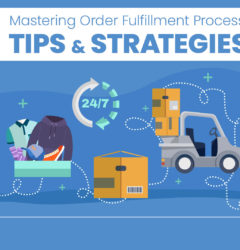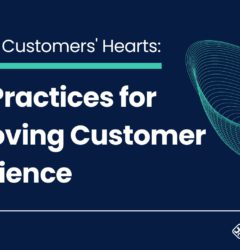08 Sep

In B2B sales, many small business owners are constantly trying to sell their product or service based on what sets their solution apart from the competition. While it is good to know the unique value proposition of your solution and be aware of the features and benefits of your product, the truth is that many B2B sales are not driven by the “positive” characteristics of your solution, but by certain “negative” aspects of your competitor’s solution. Many buyers of B2B are mainly motivated by pain rather than optimism.
According to HubSpot research, 75% of people are likely to switch brands if you don’t understand their pressing pain points. You can better understand your customers and increase sales by understanding their pain points.
It’s not just about price or data in B2B sales; it’s also about human emotions. People purchase B2B solutions because they are experiencing pain in their current business situation and want someone to assist them in relieving their stress. Pay attention not only to the positive aspects of your decision but also to the negative circumstances that motivate your prospect to consider buying from you in the first place.
Customer Pain Points and their Importance
Pain points are the challenges that potential and existing customers want to solve and are experiencing in the market.
Customer pain points are extremely varied depending on people in different roles who face different and unique challenges. This is why different solutions are required. Identifying these pain points often involves putting yourself in the shoes of your customers. It is crucial to the success of both your marketing strategies and sales.
To set up and present your product or service as the best solution to their problems, the sales team must first identify pain points. Marketers also need to understand pain points so that they can effectively advertise and produce content that appeals to potential customers and entices them. Customer pain points should be at the center of your strategy.
Types of Customer Pain Points
B2B customer pain points can usually be divided into many categories: finance, performance, process, and support.
- Financial: Customers want to cut costs and are likely looking for a lower-cost solution with the same efficiency.
- Productivity: Customers want to use their time more efficiently and are more likely to be unhappy with how much time they are spending on their current solution.
- Processes: Customers are most likely experiencing problems with their current systems and want to improve internal processes.
- Support: Customers want more appropriate support, especially during critical stages of the purchase journey.
How To Identify Customers’ Pain Points?
Now we know and understand what are the customer pain points and why they are important. We need to find out how to identify them.
Even though all customers are experiencing similar or same pain points, the solution can be diverse depending on your potential customers. That’s why identifying these pain points is a fundamental part to offer the right solution.
It might sound crazy these days of automation and intent signals (which can also give you a good idea of what people are looking for and what questions they ask), but engaging in conversation and interacting with people is key to understanding what they want.
Let’s take a look at how to get the information you need from your customers first.
1. Analyze Your Data
In today’s data-driven environment, it’s easy for businesses to review data about their customers. If you’re starting a new business and don’t yet have any customers, analyzing your competitors can help you gather as much information as possible.
If you’ve already assigned content to each stage of the buyer’s process, you’ll still need to evaluate the success of your content offerings and make data-driven decisions to generate more marketing-qualified leads next month.
Once you’ve checked and compiled the data, look for patterns to see why they’re purchasing and when they’re buying, and you’ll start to notice events that occur just before they make the purchase.
2. Make Survey Questions
Surveys and interviews are a perfect way to obtain data from existing and potential customers about their concerns. Below are some questions for you to talk with your customers to understand their pain points.
- What are the main points holding back the growth of your business?
- What is the most time-consuming task for you and your team?
- What prevents you from reaching your goals?
- Why isn’t your new approach serving you well? What would you like to see it do better?
- What is the major challenge that you face today?
Once you’ve learned from these conversations, you can start structuring your messages around your product and formulating them to address potential customer concerns specifically.
3. Conduct Qualitative Sales Research
The sales team is an excellent resource that is always available to marketers. The sales team communicates with your customers on an ongoing basis. They spend all day finding and understanding consumer pain points to deliver the solution. Getting sales representatives into patterns and/or trends is a perfect way to get customers’ insights without waiting for feedback.
4. Use Social Media
According to HubSpot research companies are focusing more on social media, content marketing, and SEO. Your customers might not share their problems with you, but you can find them on their favorite social media platforms to tackle their challenges.
You need to be careful what the customers are saying as a B2B business. For example, there are thousands of quality leads for your business on LinkedIn who are sharing their problems. It can be helpful to use social media platforms to link to other people who are in harmony with your customer.
5. Use Intent Signals
When a customer has a problem, they usually do some research on how to fix it. They visit websites, read documents and blog posts, download electronic books or white papers, collect several digital footprints to track them with intent signals. Furthermore, using motive signs helps you to target customers early in the sales process, keeping you ahead of the competition.
Solving Pain Points will Put You Ahead of the Game!
In the end, B2B buyers make a buying decision because they have a problem to be solved. In contrast to B2C customers, momentum and emotion have little bearing on whether or not an organization wishes to introduce a SaaS product, so addressing pain points should be at the heart of all the marketing and sales teams do.
If you’ve identified what is the most pressing pain points for your customers, you can start adapting your messages to clarify what to offer in order to help and bring solutions to them.
Even though customer pain points are very similar, there’s no one-size-fits-all tactic for addressing and offering the best solution. The key is personalizing your solution to each customer by listening to them.
If you do not understand what your customers’ pain points are, it can lead to their loss.
Discover, Understand, Solve your customers’ pressing pain points to be ahead of the game.
Now is the time to act!
Related Post
Recent Posts
Archives
- April 2025
- March 2025
- February 2025
- January 2025
- December 2024
- November 2024
- October 2024
- September 2024
- August 2024
- July 2024
- June 2024
- May 2024
- April 2024
- March 2024
- February 2024
- January 2024
- December 2023
- November 2023
- October 2023
- September 2023
- August 2023
- July 2023
- June 2023
- May 2023
- April 2023
- March 2023
- February 2023
- January 2023
- November 2022
- August 2022
- June 2022
- April 2022
- March 2022
- February 2022
- November 2021
- October 2021
- September 2021
- July 2021
Request a FREE consultation
We’d love to hear from you

From concept to creation, we turn visions into working software


Copyright © 2025. All rights reserved.
Follow Us
Email: sales@webservicespros.com
Phone: (888)-977-4540
















